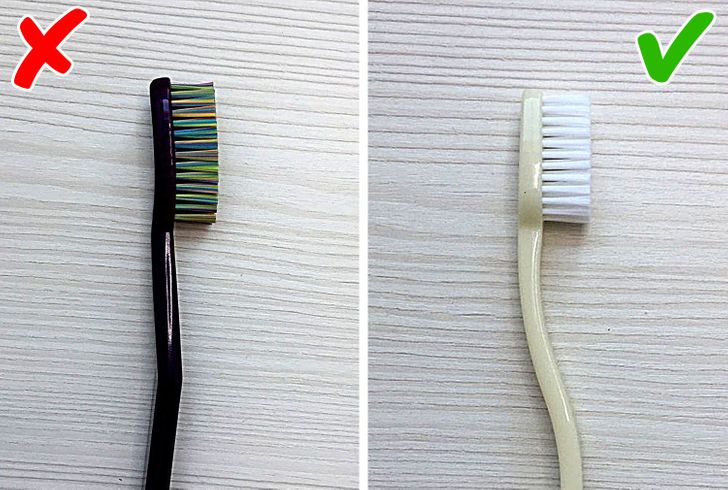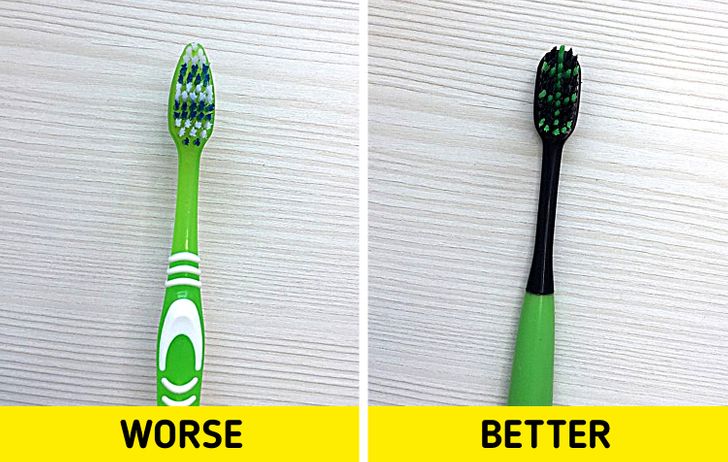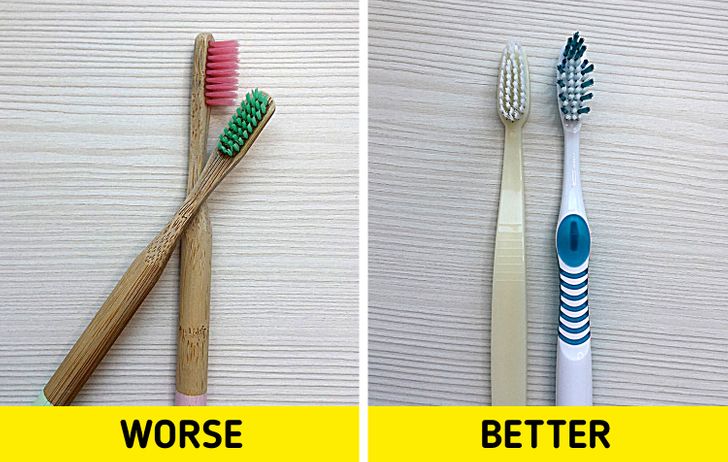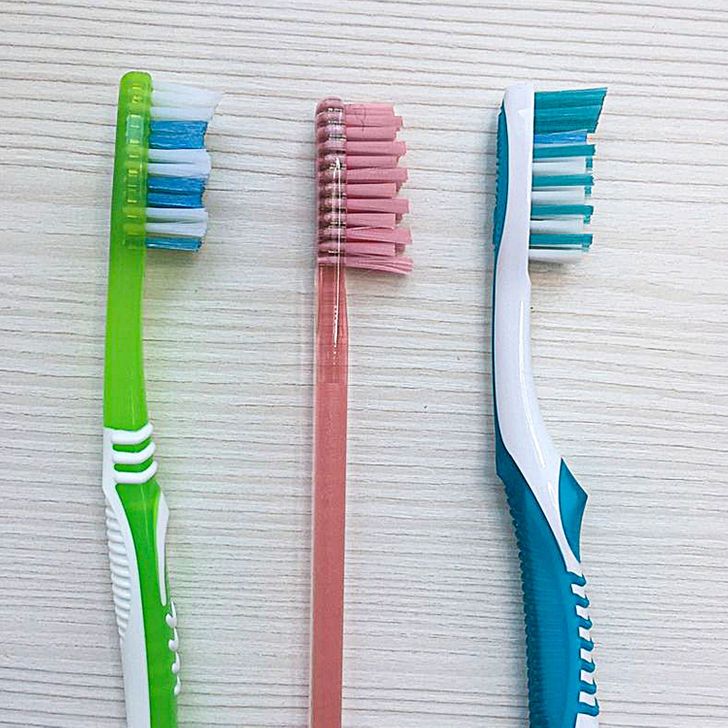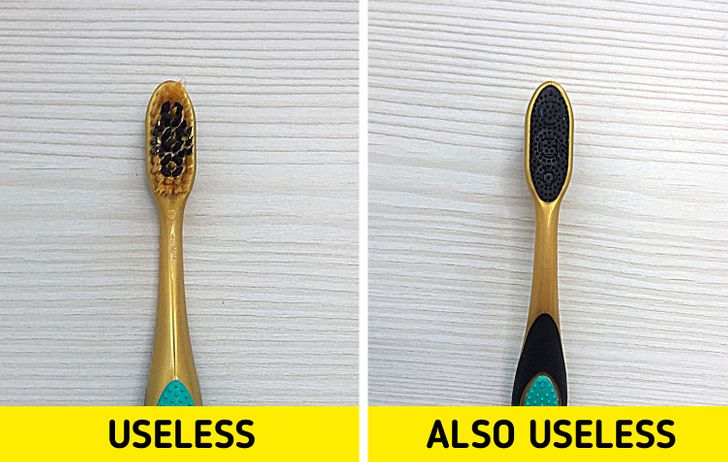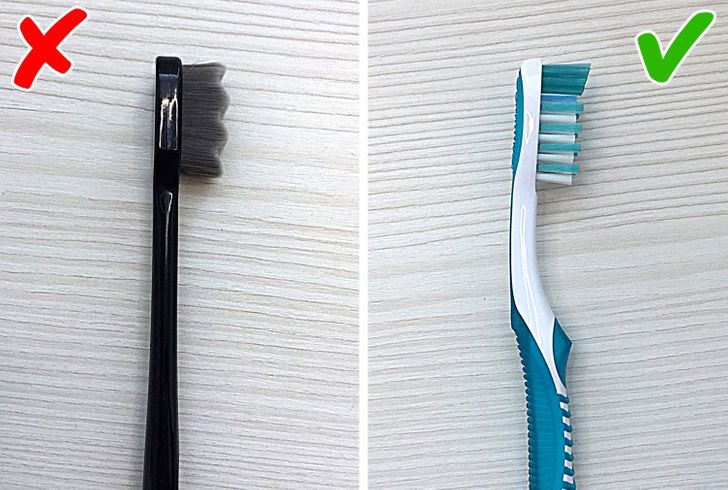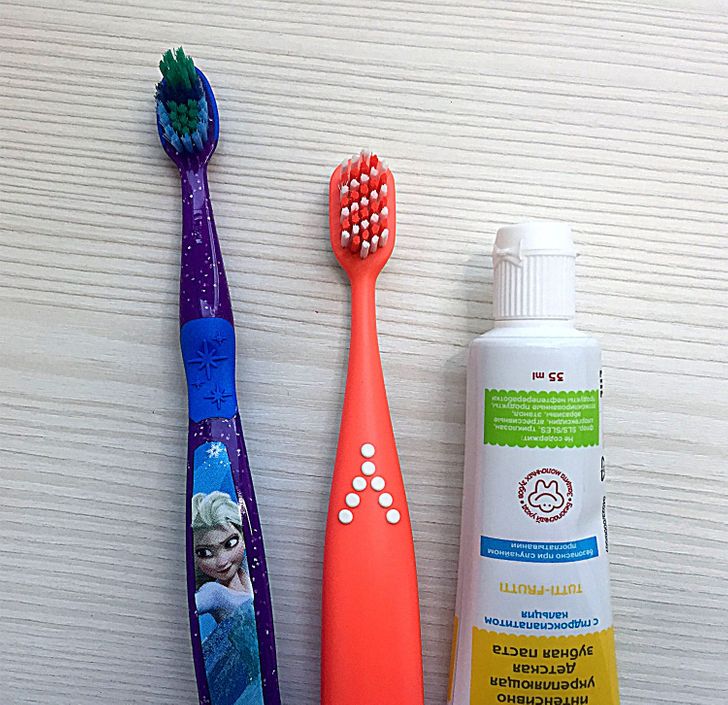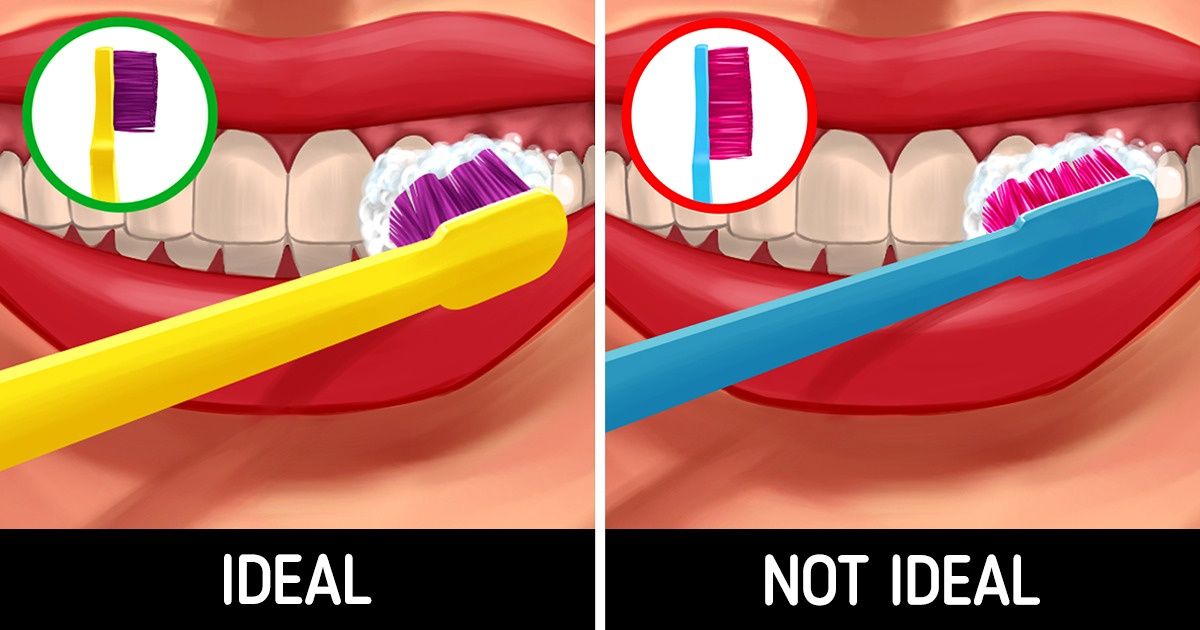
How to Choose a Toothbrush
Tooth brushing is one of those everyday rituals that we get used to doing since childhood and we use it over the course of our entire life. To make this process more effective, frequency and correct technique are important, but a good toothbrush is essential.
5-Minute Crafts found out what you should pay attention to while choosing a toothbrush.
The size and shape of the head
Experts recommend choosing a brush with a small work surface, no more than 1 inch long. This way you can easily clean your teeth even in hard-to-reach places. It’s hard to achieve the same result with a toothbrush that has a bigger head. The big head prevents the brush from being maneuverable and cleaning molars well from all sides.
The shape of the head is not very important. However, dentists say that an oval head cleans teeth and gums better, it is also less traumatic to the oral cavity.
The length and shape of the handle
First of all, a toothbrush handle should be comfortable to hold and long enough.
A toothbrush with a straight handle is a traditional option. It’s easy to control. The tilted head helps to clean interdental spaces more effectively, and a toothbrush with a zigzag insert helps you to avoid unnecessary pressure on teeth.
The material of bristles
Despite the fact that more and more brushes with natural bristles are appearing on the market, dentists say that brushes with synthetic bristles are still safer for your teeth. A natural brush can serve you no longer than 6 weeks, and it must be replaced after that. The natural bristles are less resistant to pressure. With regular use, their ends begin to split and remove plaque less effectively. Besides, natural bristles are made of a porous material that takes on bacteria from the oral cavity during tooth brushing.
A brush with synthetic bristles has a non-porous structure, it is easier to clean, and it dries faster, which inhibits the growth and reproduction of bacteria. Also, the ends of the synthetic bristles are often more rounded, which allows the user to avoid unwanted gum damage. A regular toothbrush with synthetic bristles can serve you for 3 to 4 months. However, it also has to be replaced with the first signs of wear.
Firmness of the bristles
When choosing how firm your toothbrush should be, experts recommend that you should make your choice based on how strong your tooth enamel is.
- Children with milk teeth, whose enamel is not very strong, and people with very sensitive teeth should use a brush with soft or even extra soft bristles. They will gently clean the tooth surface without damaging the surrounding tissues.
- A brush with firm bristles is suitable for people whose teeth are prone to tartar formation. However, long-term use of a brush with these bristles is not recommended: it can increase tooth sensitivity and injure gums.
- A brush with medium bristles is perfect for most people. They clean teeth and interdental spaces gently and effectively, and they also don’t injure gums and enamel.
Necessary and unnecessary additions
Toothbrush manufacturers offer us numerous additional options to help us clean our teeth better. However, not all additions are equally effective.
- Scientists proved that multilevel bristles are a useful addition to a brush: they help to clean teeth from all sides.
- A silicone insert on the cleaning surface doesn’t really help in brushing your teeth. It is too soft and elastic to effectively remove dirt from the enamel.
- A special tongue cleaning surface is good to have and can be used for its intended purpose, but a regular brush head is just as good for cleaning the tongue too. It may be even more effective.
- Zigzags on the handle help to reduce pressure on the teeth during brushing, and silicone patches make the handle less slippery in your hand.
- Dentists say that a large number of bristles help to clean your teeth more effectively. However, if there are too many bristles on the head (this usually happens when the toothbrush is soft) it will be almost impossible to clean your teeth properly.
Electric vs Manual
Despite the fact that an electric toothbrush makes tooth brushing more simple, experts are sure that there is not much difference between manual tooth brushing and brushing with an electric brush. It’s the frequency and duration of brushing that are important.
How to choose a toothbrush for a child
- To make sure a brush provides equal pressure on the child’s teeth and cleans them well, its bristles shouldn’t be firm or too long. Choose a brush with medium-length soft bristles (up to 10 mm).
- The head of a children’s toothbrush should be small enough — a few times smaller than that of an adult toothbrush. Choose a shape without any angles, with a length of about 2 to 3 teeth.
- It’s very important that the handle of a children’s toothbrush is comfortable, slip-resistant, and fits well the child’s hand. It’s good if it contains rubber elements.
- The look of a children’s toothbrush is also an important factor. It will be much easier to teach your child to brush their teeth regularly by turning this ritual into a game. Look for a brush in a bright color, or the one that has their favorite children’s character on it.
